Nowadays many businesses implement automation and use chatbots for web to replace human employees. The bots take on up to 60% of workload, help to improve the customer experience, and boost sales. They are suitable for many different business types and fields. In this article, we’ll tell you how exactly chatbots can help your business, briefly describe how to make a chatbot, and how to deploy it on a website or an individual page. Let’s go!
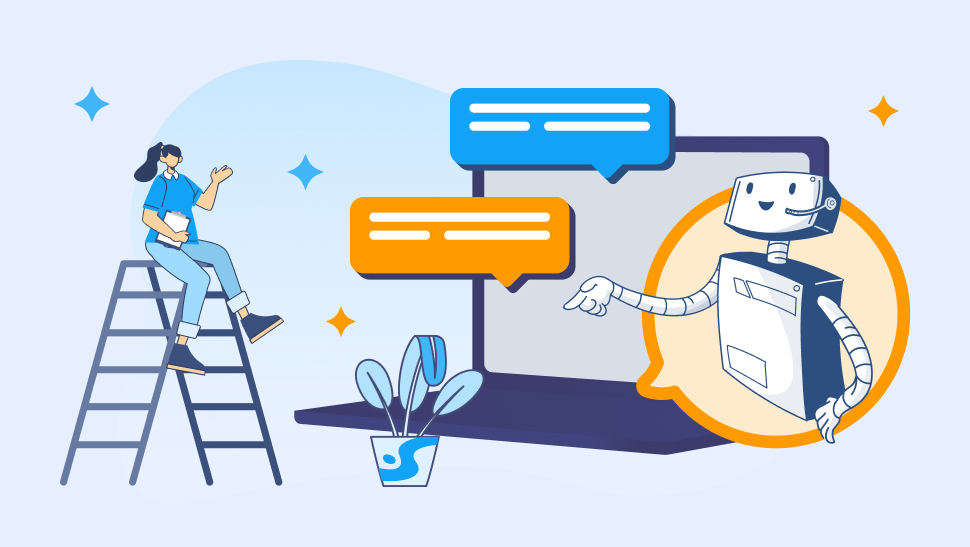
Table of Contents
- What is a Chatbot?
- Why Exactly Do I Need to Create a Chatbot?
- OK, I Want To Get a Bot. Should I Put It on an Entire Website or a Single Page?
- Key Things to Set Chatbots' Behavior
- Guidelines on How to Build a Chatbot for a Website
- Now, How to Deploy a Bot?
- Conclusion
What is a Chatbot?
Actually, you surely have dealt with chatbots. They are the same online consultants who welcome you on websites and offer help. And you even might think they are real people. So smart they are — those chatbots.
So, a chatbot is a program that is meant to simulate human conversation by messaging in real time. Some of them have artificial intelligence (AI) and Natural Language Processing (NLP) under the hood. They are the smartest and the most advanced. Such AI chatbots can understand ordinary human language, recognize the context of a conversation, acquire world knowledge becoming as smart as Google, and thus give a truly relevant response. They are referred to as contextual chatbots.
Another type of AI chatbots is not so smart. Their underlying technology is keyword recognition, which enables them to detect the user's intent and choose a proper pre-programmed answer.
Some chatbots don't have any intelligence at all and are ruled by condition-based scripts with a decision tree algorithm at the core. They take a customer step-by-step through the predefined scenario to clarify their needs and give a suitable answer. Such bots are usually menu- or button-based.
And you know what, any type of chatbot can be a great help for a small business. Plus you can build a sophisticated hybrid chatbot that combines AI, keywords recognition, and menu/button-based mechanism. However, building and testing such a sharp cookie takes a lot of time.
TruVISIBILITY platform includes a Chat app — website chat software that allows to create AI-driven chatbots of any complexity. You don’t have to know how to code. All the process is done with a visual builder. Get a TruVISIBILITY freemium account now and create your first AI-driven chatbot!
Why Exactly Do I Need to Create a Chatbot?
Your customers are the backbone of your business. To find ways to satisfy their needs is your number one task.
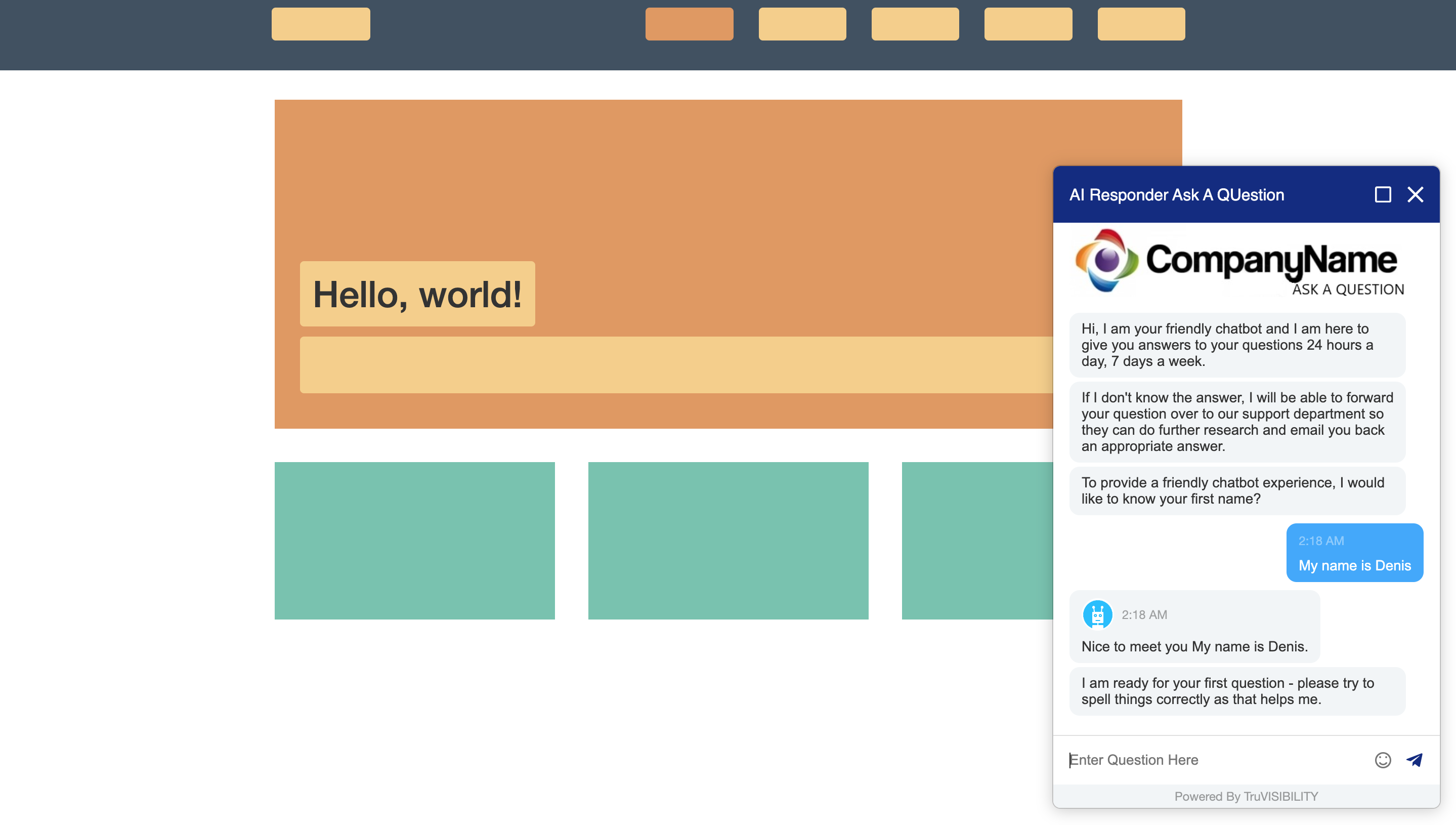
However, with the increasing pace of life and technology, customers' habits and expectations have changed. People expect to receive immediate responses to their queries, no matter what time of day. And that’s where chatbots should be used if you don’t want to spend a fortune on personnel — sales agent, customer support agent, etc. That’s where humans are to be substituted by robots.
But what tasks can chatbots carry on? A lot of! Here are four ways how a chatbot can benefit your business.
1. Offering 24/7 Support
Your online business is open around the clock. Whether you run a website, a Facebook group, a Telegram channel, or just have a business account in WhatsApp — your virtual doors welcome clients 24/7. But do you have someone to provide live chat support and give prompt replies to customers' queries on the same schedule? This is where a chatbot is ready to serve.
Your chatbot can answer frequently asked questions (FAQs), help customers troubleshoot issues, and even make recommendations. By providing excellent support, you will reduce customer churn and increase customer satisfaction.
2. Collecting Personal Data
You might think you perfectly know your clients. But what if not? You may be aware of general needs, but still be unable to meet their wishlist. As a result, your offer might be a bullet that missed. While your competitors' bullet might hit right on target. To know your clients better, use a chatbot.
3. Screening Leads
Have you ever walked into a store just to have a look and hang around without the intention to buy anything? That's the behavior of an unqualified lead. And woe to that sales assistant who decided not to fallback, and wasted their time with you.
Many visitors to your online store are the same — they just click, surf, and make a call to ask weird questions such as: Do the lobsters come from the lake? Do you sell gum for cats? Do you have any cell phones that absorb radiation, like the stealth bomber?
Hey! Don't spend your time on them! Let the chatbot do it! By asking questions and collecting information, those AI guys can qualify leads before they ever speak to a human being. This will save you time and money by ensuring that only qualified leads are passed on to live chat with your sales team. And immediately!
If you don't know what people ask and which answers to put into the chatbot's database, chatbots will find out. Not a big deal for them!
4. Making Conversational Marketing
Conversational marketing — what is it? It is a way of marketing that is being used by small businesses to connect with their customers. It involves using a bot to interact with customers naturally, providing them with support and information about products and services.
Sounds like a classic sales technique that is as old as time that boils down to engaging a customer through a real-time conversation, doesn't it?
However, that's easily done in offline business and a hard task with online stuff, simply because you can't seat a live sales assistant to monitor every visitor days and nights and answer customer questions. But you can add a chatbot to your website and it will happily pull visitors to talk, not leaving them time to think and change their minds.
An AI chatbot can engage in small talk, provide recommendations, and even book appointments. By providing these services, you will make it easy for customers to do business with you – without ever having to pick up the phone.
And last but not least: your competitors are already using chat bots, taking your clients away. Don't let them beat you up! Install a chatbot to your website too!
OK, I Want To Get a Bot. Should I Put It on an Entire Website or a Single Page?
In 99,999% of cases adding a chatbot to a website implies deploying it on an entire website. That's the default way.
However, if you are a tech savvy dude do not feed bread — let me code something, then roll up your sleeves and put a unique bot for any number of individual pages just by adding the needed piece of code manually.
You may want to go that way to make the flexible architecture of your virtual sales department. And if you don't want to mess with designing a complex chatbot responsible for the whole range of possible queries and would like to build up a virtual team of small and simple chatbots and have a party with tea and cookies.
As a result, you will get the same structure as in large offline stores, where each department has its salesperson. A special boy for the home appliance department, a special girl for cell phones, and a whole team for the return, exchange, and warranty repair department. Plus a security fellow at the entrance who opens a door for you and inspects the backpacks of suspicious visitors.
In the same way, by embedding code manually you can add a bot to only one page of a multi-page site.
But hold on a second, before adding a chatbot to your website, you need to craft one first.
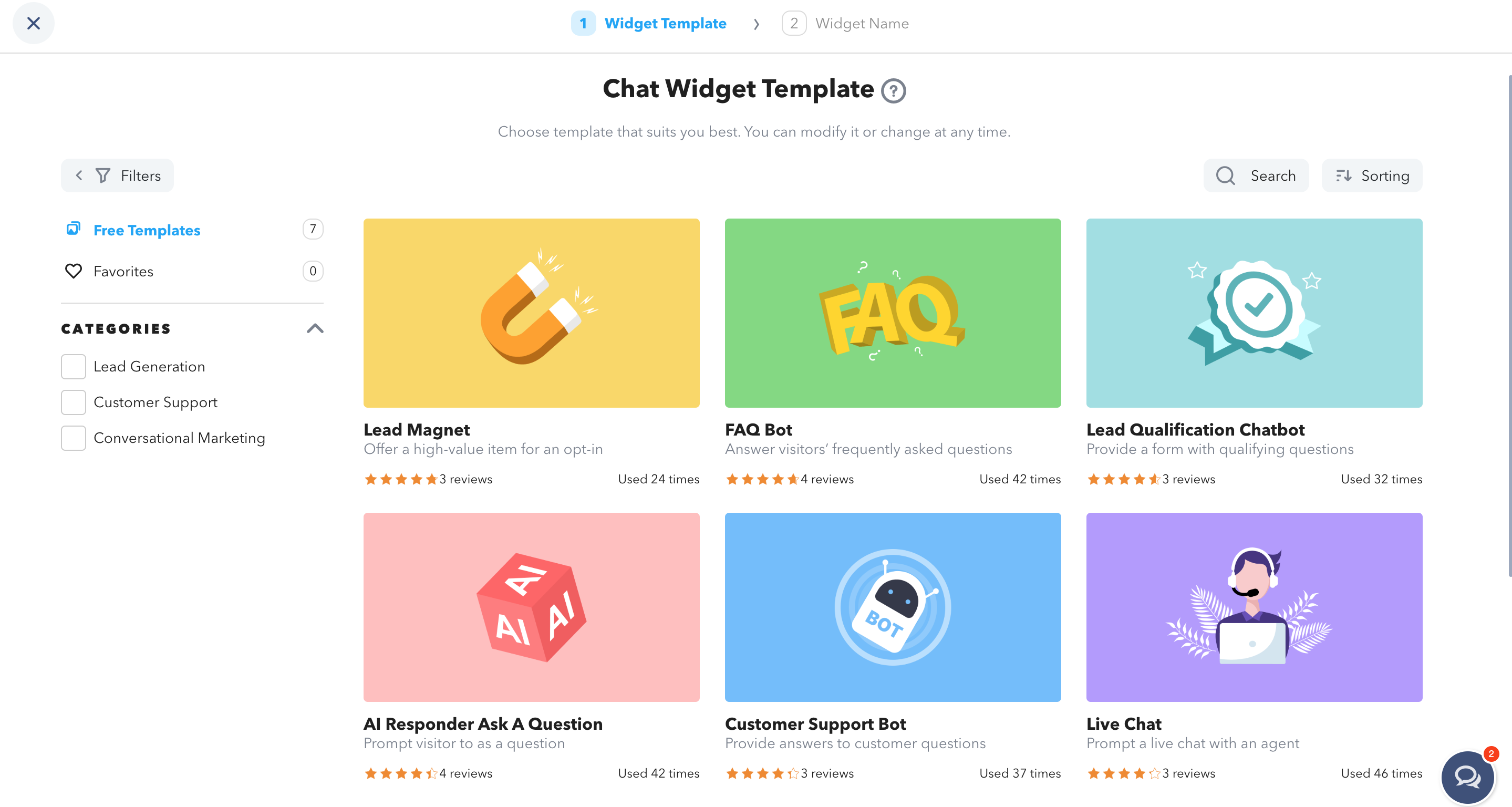
With a website chat solution TruCHAT app, you can create a chatbot from a template or build one from scratch. The former is the simplest way to build a chatbot because TruVISIBILITY developers have already created the bot's logic. You just have to adjust it to your needs and edit content — texts, images, and other stuff. In both cases, you also should pay attention to the peculiarities of your chatbot's behavior.
Key Things to Set Chatbots' Behavior
In any case, whether you choose a bot from a template or design your own, you have to manage his behavior. Every chatbot starts with a trigger and lives according to scripts managing its behavior. Let's dig into this, using the example of the TruCHAT app.
Trigger
A chatbot's life starts with a trigger — a mechanism based on a set of conditions under which a chatbot comes in contact with a site's visitor. You can add just one condition or combine multiple conditions with logical AND/OR.
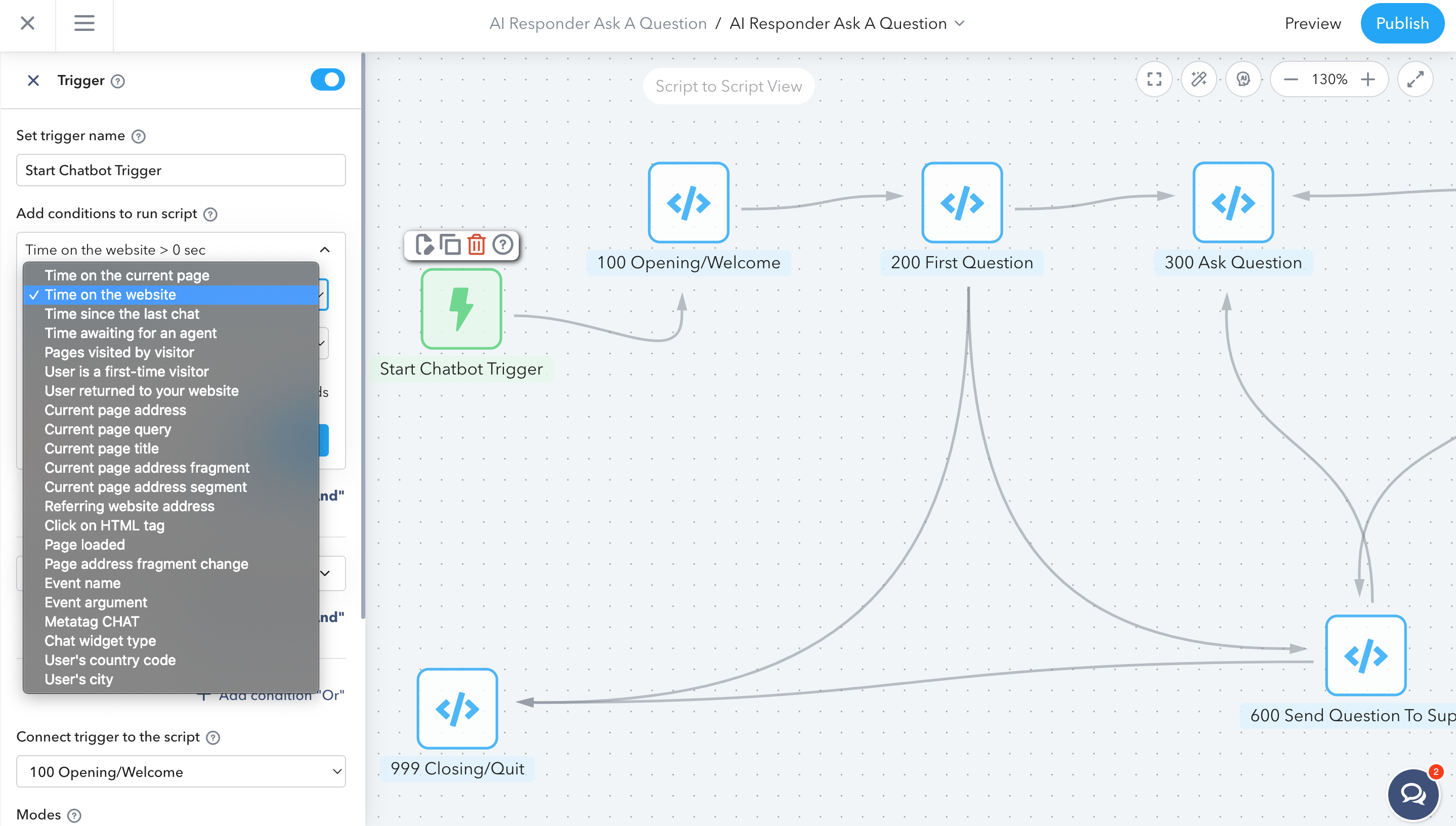
For instance, you may program your bot to launch a conversation with a visitor based on the time the user has spent on a current page. Or you can summon the bot when a user opens a certain page.
Once the trigger is activated, it fires up a script — a chatbot's algorithm which allows leading a conversation in a predefined flow. In essence, building a bot is script development.
Script
A script is a set of commands that a chatbot follows. They are called steps and they, in turn, include various elements.
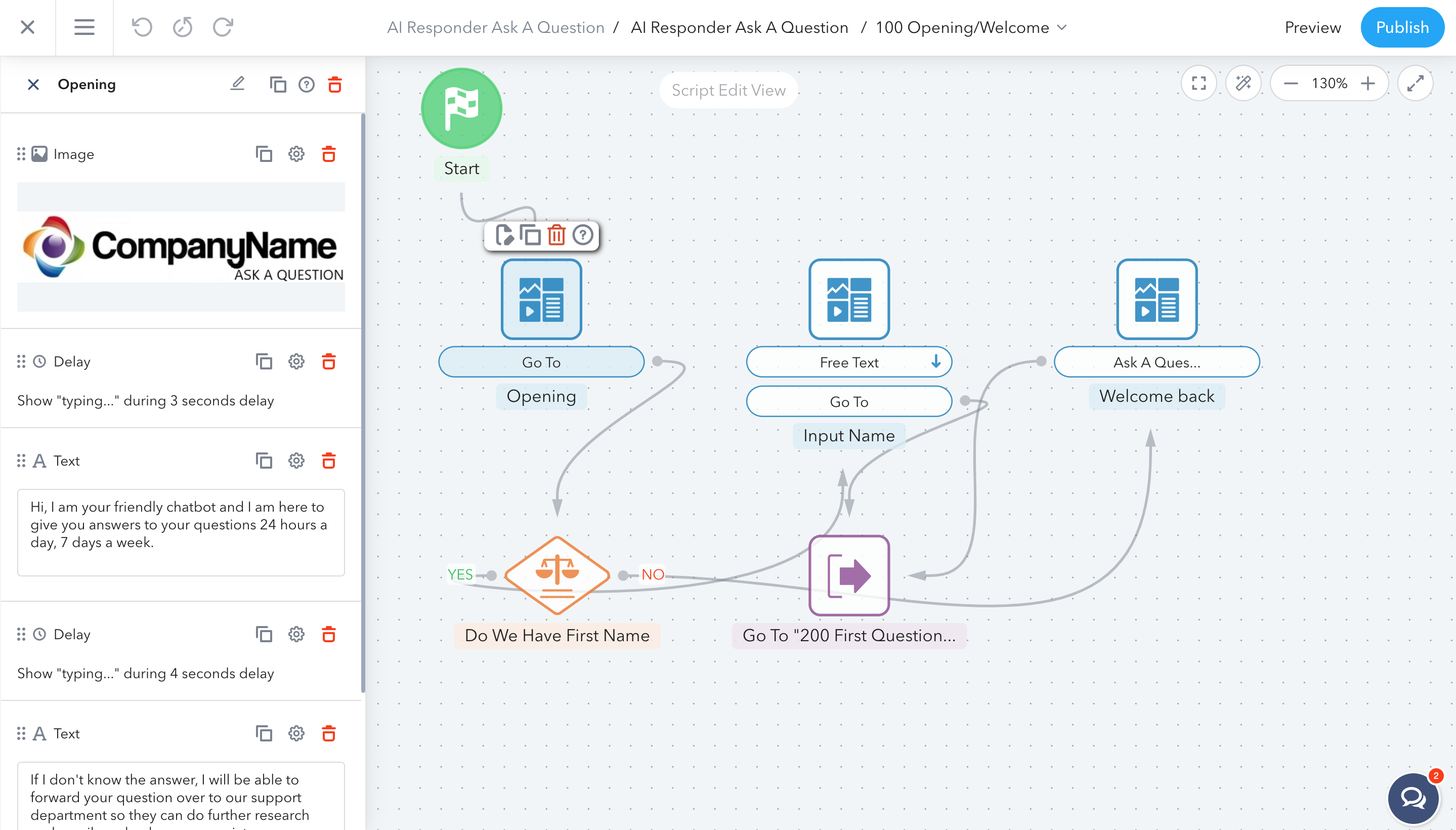
Here are some of them:
- Content — this element can include text, images, go-to action, user input (free text or buttons for quick replies), etc
- Field Switch — extended condition, which gives multiple choices
- Transfer — a bridge to another chatbot or a live chat solution
- Perform Actions — enables your chatbot to do something, for instance, add a tag, send an email or SMS, redirect the conversation to AI core
- Spreadsheet — connects your chatbot to a spreadsheet to create a new one or modify it. Wow, that's a real database management tool!
Get a freemium TruVISIBILITY account and jump in to check out all the elements!
Relationships between steps are shown with action arrows. A step without an arrow is an orphan — no parents, no children. When developing, it is important to make sure that the bot does not have dead ends and does not leave the user without answers.
Guidelines on How to Build a Chatbot for a Website
Crafting a chatbot script is a complicated task, which requires profound research of business processes and creativity. To write a script, consider these tips.
Goals. Define your chatbot's goals. What purpose does it serve? How can it help your customer? How can it help you? What's the meaning of a bot's life? Keep in mind a chatbot is not a human, it can't exist just for its enjoyment. It is important to understand what task the chatbot will solve and how: it will independently answer the client’s questions or connect with the human agent at the right time.
Language. Speak your customers' language. Address a certain person, not the whole of humanity. Choose appropriate tone and wordings. And let your chatbot have a character. Upload an avatar and give it a name.
Be short. Don't think that your customers have time and patience to read long replicas. They don't. Use short sentences. Don't stretch a message longer than 60-90 characters. If you feel that answer is getting too long, then
break it
into pieces.
Like real people in chats do.
Be diverse. To make your chatbot sound like a real human, teach him to give different answers to the same question.
Don't rush. Give your chatbot time to type a message. Sure it doesn't type anything, but such a slight touch gives a visitor the illusion that there's someone on another side who takes care of them. Let it be around 0.5 second between messages.
Now, How to Deploy a Bot?
If you are using TruVISIBILITY Site application, then adding a chatbot to your website is simple. Everything you need to do is to add a Chat block within a section and choosing up a Chat widget in its settings.
For any other website, including Wordpress, you'll have to add HTML code with a piece of Javascript that calls for a chatbot. As with any other JS script, it should be added right above the </body> tag following the rest of the code.
Conclusion
Implementing a chatbot can revolutionize your small business by giving you access to 24/7 customer support, lead screening, vital data collection, and online conversational marketing. Not only is this more efficient than having an in-person team available at all times, but it also allows you to save money on staffing costs while still providing excellent customer service.
TruVISIBILITY platform offers you easy-to-use tools for creating any type of a messenger or website chatbot — from a simple rule-based fellow with buttons for quick replies to a sophisticated virtual assistant with AI and NLP. To start using a chatbot in your business, just sign up for a freemium TruVISIBILITY account. No credit card required!
Want to receive more articles?
Sign-up for our weekly newsletter to receive info that will help your business grow



